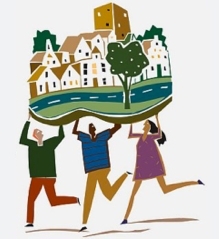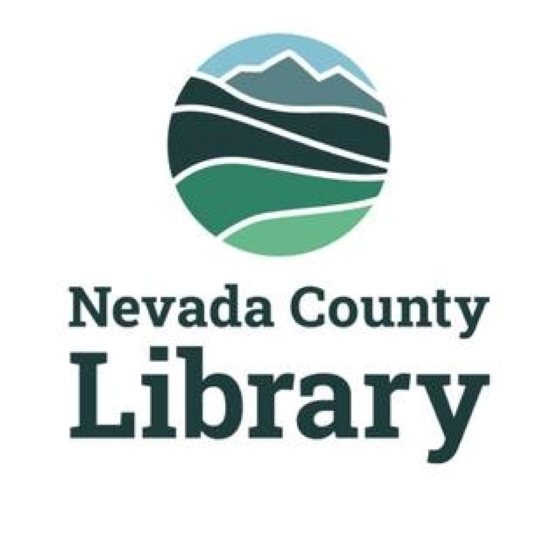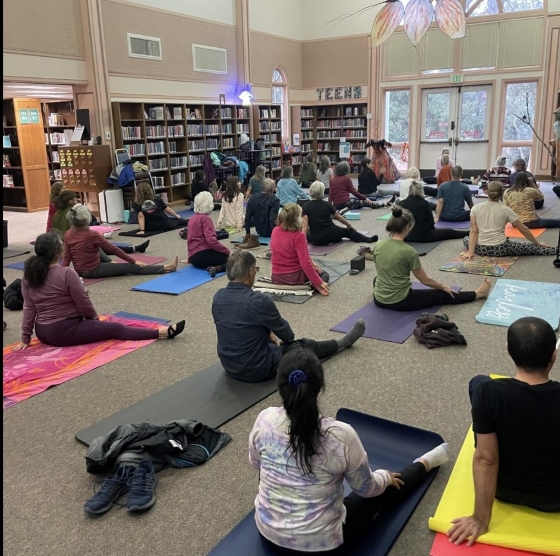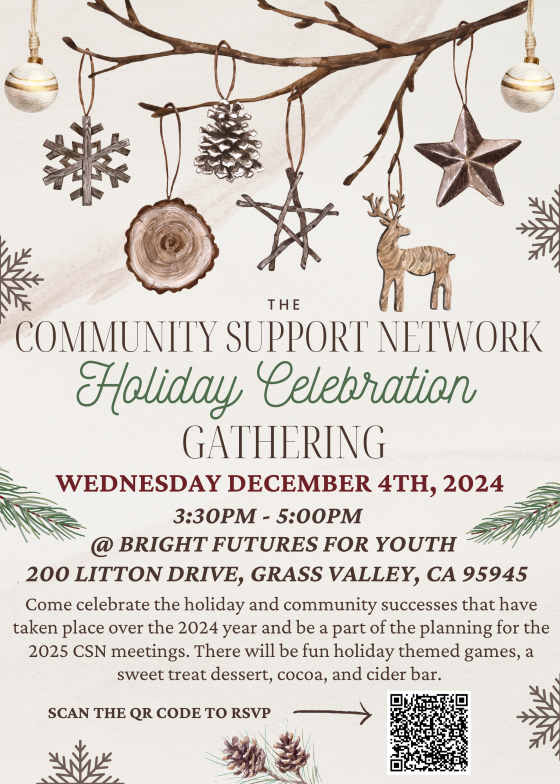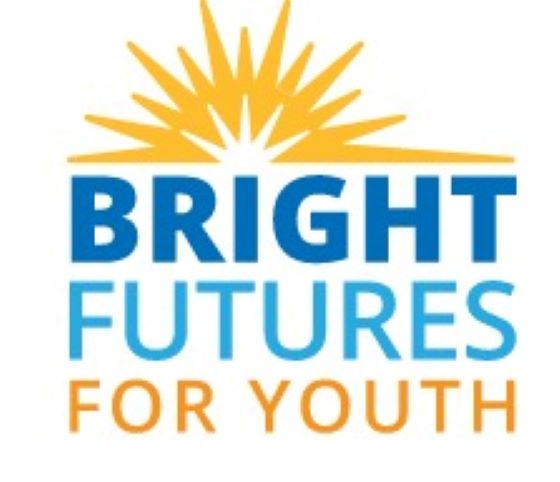Ready Nevada County will hold a countywide CodeRED emergency alert test on Thursday January 23, 2024.
Nevada County uses CodeRED for emergency alerts. Be prepared by registering now for CodeRED emergency alerts at https://www.nevadacountyca.gov/3780/Emergency-Alerts.
Need assistance registering? Contact 211 Connecting Point by dialing 2-1-1 or 1-833-342-5211
Need to make changes to your account or verify your information? Contact the CodeRED Emergency Alert Customer Support team at crsupport@onsolve.com or 866-939-0911 x1, Monday-Friday 6 am-3 pm.
csnnc
Health Supply Vending Machine
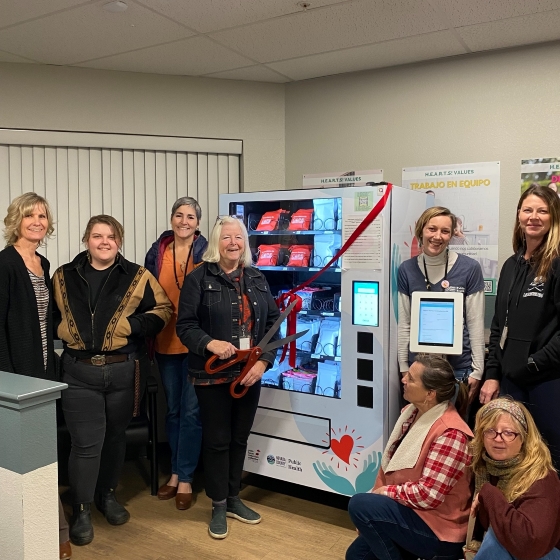 Nevada County Public Health has opened its fifth Health Supply Vending Machine at Brighton Greens Resource Center (988 McCourtney Rd.,Grass Valley). The machine provides an additional access point to existing free and confidential health products that save lives, prevent chronic disease, promote mental and physical health, and reduce harm at one of the County’s most high-traffic facilities.
Nevada County Public Health has opened its fifth Health Supply Vending Machine at Brighton Greens Resource Center (988 McCourtney Rd.,Grass Valley). The machine provides an additional access point to existing free and confidential health products that save lives, prevent chronic disease, promote mental and physical health, and reduce harm at one of the County’s most high-traffic facilities.Free Christmas Tree Recycling
GV Library – New Adulting Program
Wild & Scenic Film Festival
If you have questions, please contact Emily Wilson at emily@yubariver.org
Community Yoga Class
Job Opportunity
 Interfaith Food Ministry
Interfaith Food Ministry
Two AmeriCorps VISTA Positions
AmeriCorps VISTA is a federal program that provides needed resources to nonprofit organizations and public agencies to increase their capacity to lift communities out of poverty. Learn more here.
Interfaith Food Ministry will be hosting TWO VISTA members for a term of service starting on 2/10/2025 and ending on 2/9/2026. VISTA members serve for 40 hours per week for those 12 months. VISTA members earn a Living Allowance paycheck from AmeriCorps of $877.66 every two weeks during service, and then can choose between an Education Award of about $7,400 OR a cash stipend of about $3,000 upon successful completion of their term of service.
IFM has chosen to supplement with two additional benefits:
- A housing stipend of $200 per month (paid directly to the VISTA member’s landlord / property management).
- A cell phone reimbursement of $50 per month.
Review positions below.
Operations and Admin Project Coordinator
Fundraising and Outreach Coordinator
Applications accepted until 12/31/2024. For more information, click HERE.
Interfaith Food Ministry works to reduce food insecurity in Nevada County. We feed the hungry, helping to sustain good health and human dignity. The Vision is a community where no one ever feels the hurt of hunger.
To learn more about Interfaith Food Ministry visit their website at www.interfaithfoodministry.
Literary Yarns
Tomorrow’s 12.4.24 CSN Holiday Celebration
Local Job Opportunities
SAFE Program Case Manager 1
Bright Futures for Youth is looking for a Case Manager 1 for the SAFE program. This person will provide youth case management for youth at risk of or experiencing homelessness between the ages of 12 and 26.
Client case management includes housing search, support, and stabilization into the SAFE Program at Bright Futures for Youth. This position works closely with the SAFE Program Manager to utilize workflows, policies and procedures, ensure continuous quality improvement, and coordinate with staff and volunteers.
This is a full-time, non-exempt position with benefits, supervised by the SAFE Program Manager.
Click here to learn how to apply!
Accounting & Human Resources Manager
The Accounting & HR Manager will oversee finances, payroll, and basic human resources functions. The Accounting & HR Manager will be a part of The Center’s leadership team taking an active role in providing outstanding cultural arts service in the community and contributing to maintain The Center’s positive and professional work environment.
Full time, exempt position reporting to the Executive Director, 40 hours per week. Time can vary based on event schedule and other deadlines. Salary range – $68,640 to $80,000 depending on experience.
For more information and a full job description, click HERE. To apply, please send a cover letter and resume to hr@thecenterforthearts.org
The Center for the Arts is a cultural and educational organization that promotes and presents literary, visual, and performing arts for the enrichment of our community.
To learn more about The Center for the Arts visit their website at thecenterforthearts.org
Director of Development
The Director of Development (DOD) would refine and execute an annual fundraising and communications strategy while expanding SH’s support base, diversifying sustainable funding streams and engaging donors with our programs and services. The position will emphasize identifying, cultivating and soliciting major donors, family foundations, state and federal opportunities, and partnerships. This position reports to the Executive Director (ED) and plays a key role in the accomplishment of Sierra Harvest’s mission. They will supervise two part-time development staff members and the Marketing and Events Coordinator (MEC).
This is a Part time (20 hours/week), permanent position with full time potential; hourly rate of $30-$40/hr, depending on experience and reports to Executive Director. In addition, flexible work schedule including hybrid option (work from home up to 50% of hours worked), is offered, plus paid professional development, retirement savings plan and self-care planning tools and support.
For full job description, click HERE
Applications will be accepted on a rolling basis until the position has been filled. To apply, please send a cover letter and resume to jobs@sierraharvest.org
Sierra Harvest is dedicated to transforming lives and strengthening community through fresh, local, seasonal food. We envision a thriving local food economy and a network of financially viable farms providing good food for the community, where health and wellness is accessible to people of all ages and they are engaged in growing, harvesting, preparing, and sharing fresh food. We are creating a place where food producers thrive and residents of all ages have access to fresh, local food.
To learn more about Sierra Harvest, visit their website at sierraharvest.org
Documents Specialist
FREED is seeking qualified candidates for the position of Documents Specialist to support the Nevada County Housing Program. This position will provide information and support regarding the collection and submission of housing documents for people with disabilities. The Documents Specialist will assistant individuals with disabilities, particularly those who are at risk of homelessness or experiencing homelessness, to apply for housing and supportive service programs. Consistent with the core components of Housing First, this position will collaborate with the Continuum of Care (CoC) and the Coordinated Entry System (CES) to ensure populations with the highest needs are given the highest priority and are able to access services and support to obtain affordable, accessible housing. EOE, Individuals with disabilities strongly encouraged to apply. This position is 20 hours per week. Click HERE for full job description.
Benefits Specialist
This full-time position can be based in either the Grass Valley or the Yuba City office. FREED is seeking qualified candidates for the position of Benefits Specialist to support the Nevada County Housing and Disability Advocacy Program. This position will provide information and support regarding benefits for people with disabilities. The Benefits Specialist will provide SSI/SSDI Outreach, Access, and Recovery (SOAR) assistance for individuals with disabilities, including those who are experiencing homelessness, to apply for disability benefit programs. Consistent with the core components of Housing First, this position will collaborate with the Continuum of Care (CoC) and the Coordinated Entry System (CES) to ensure populations with the highest needs are given the highest priority and are able to access SOAR services. EOE, Individuals with disabilities strongly encouraged to apply. This position is 30 – 40 hours per week. Click HERE for full job description.
Interested individuals for either position should email a cover letter and resume summarizing qualifications and experience to FREED at jobs@FREED.org.
FREED’s mission is to promote independence and self-determination for people with disabilities through person-driven services, collaborative community partnerships and education, and leadership that advocates for fully inclusive communities.
To learn more about FREED, visit their website at freed.org
